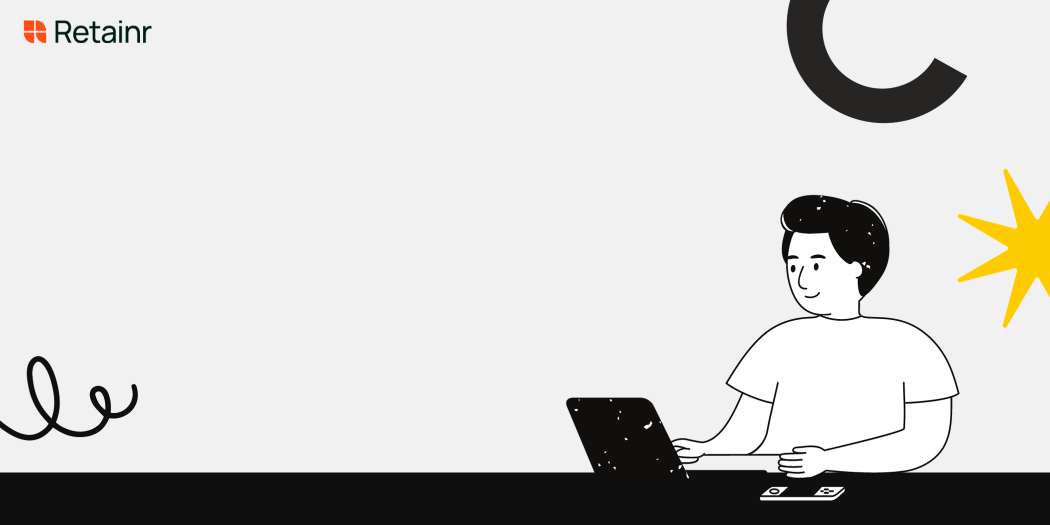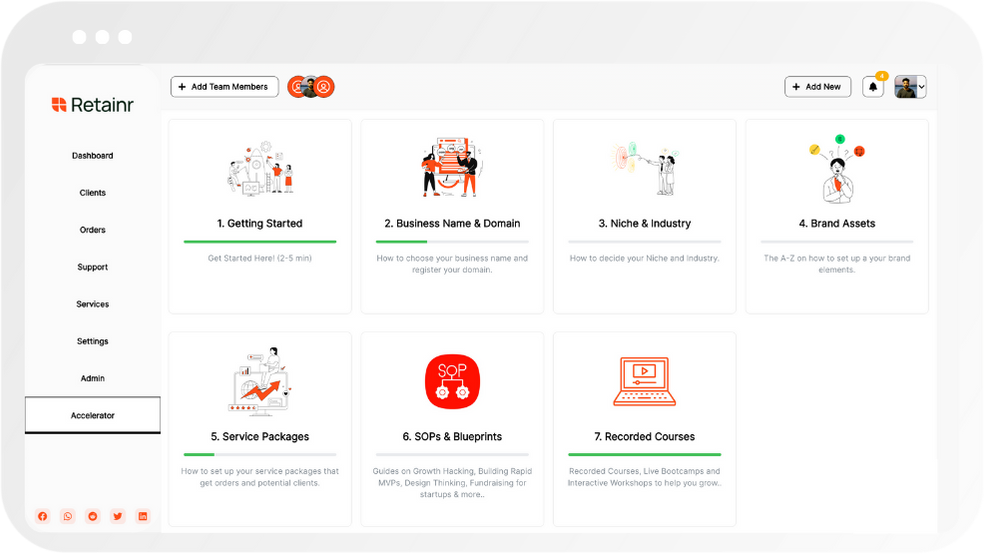
How to Build and Maintain a Remote Work Culture
Build with Retainr
Sell your products and services, manage clients, orders, payments, automate your client onboarding and management with your own branded web application.
Get Started1. How can I build strong remote work culture within my organization?
Building Strong Remote Work Culture: Key Strategies
Building a healthy remote work culture in your organization isn't a herculean task, but it does require strategic planning and consistent efforts. A few recommended strategies include creating transparent communication channels, fostering strong relationships, and embracing flexibility.
The following table provides a detailed explanation:
| Strategy | Description |
|---|---|
| Creating Transparent Communication Channels | Transparent communication is a cornerstone of strong remote work culture. Using platforms like Slack, Zoom, or Microsoft Teams, you can keep your team updated and maintain seamless communication. Regular check-ins and meetings can help everyone stay on the same page. |
| Fostering Strong Relationships | Encouraging team members to socialize and connect personally can foster strong relationships in a remote setting. You can arrange virtual coffee breaks, team-building activities, or online games to promote interpersonal connections among team members. |
| Embracing Flexibility | One of the main advantages of a remote work setup should be flexibility. It is important to understand that employees might be balancing various responsibilities at home. Hence, allowing them to choose their working hours can lead to increased productivity and job satisfaction. |
Maintaining a Robust Remote Work Culture
Building a strong remote work culture is just the first step. It’s equally important, if not more so, to maintain it. Here are three imperative ways to do so:
- Continuous learning and development: Offer opportunities for your team members to improve their skills and evolve professionally. This could include webinars, online courses, or workshops related to their fields.
- Open feedback culture: Encourage employees to share their thoughts and suggestions about the organization’s working style or projects. An open feedback culture fuels innovation, enhances work processes, and promotes a sense of ownership among employees.
- Recognition and rewards: Recognize and appreciate the efforts of your team members. Rewarding them for their hard work and accomplishments helps boost their morale and motivation.
2. What strategies can help to maintain a positive remote work culture?
Effective Communication Strategies
Clear and constructive communication is key to a successful and positive remote work culture. Several strategies can be employed to achieve this. Firstly, a platform for real-time communication like Slack or Microsoft Teams is essential. Regular video conferences via Zoom or Skype also offer a more personal way to touch-base. Email should be used for more formal communication. The right balance and clarity can prevent misunderstandings and issues with task assignments.
- Use communication platforms like Slack or Microsoft Teams for instant interaction.
- Employ video conferencing tools such as Zoom or Skype for regular team meetings.
- Emails can be utilized for more official and formal communications.
Inclusive Work Environment
Ensuring that a sense of belonging is fostered among remote workers is also pivotal for maintaining a positive remote work culture. Here are some strategies to instill inclusivity:
- Regular virtual team building activities can help in fostering closeness.
- Recognizing and appreciating employees' efforts and achievements on a public platform, it boosts their morale.
- Provide personalized career development opportunities, it ensures employees that they are valued and their growth matters.
Flexibility and Support
A flexible and supportive work environment can greatly contribute to employee satisfaction and avoid risks of burnout. A few practical steps to put these into action include:
| Flexibility | Support |
|---|---|
| Offer flexible work hours to accommodate different personal schedules. | Provide efficient technical support to deal with any work-from-home challenges. |
| Ensure ample time is allotted for breaks in between intensive work periods. | Offer comprehensive training and development programs to help employees adapt to the remote work environment. |
3. What are the key elements to consider when building a remote work culture?
The Fundamental Elements for Building a Remote Work Culture
Building a remote work culture that motivates employees, encourages teamwork, and fosters growth, requires consideration of several key elements. Firstly, having well-defined communication tools and protocols ensures that everyone is on the same page and keeps the team connected. Tools like Slack, Teams, and Zoom are invaluable for virtual team collaboration. Secondly, it's important to implement clear guidelines and expectations. These could include work hours, deadlines, meeting attendance, and goals. Finally, encourage social interaction among team members. This can be done through virtual team building exercises or casual chat platforms where team members can connect on a personal level.
Examples of Communication Tools for a Remote Work Culture
| Communication Tool | Key Feature |
|---|---|
| Slack | Facilitates instant messaging and file sharing |
| Teams | Enables team collaboration with built-in Office365 apps |
| Zoom | Allows video conferencing with screen sharing features |
Maintaining a Remote Work Culture
Maintaining a remote work culture requires continuous effort and engagement. Some strategies to consider are:
- Regular check-ins: Managers checking in with employees on a regular basis to monitor progress and offer necessary support
- Feedback and recognition: Providing constructive feedback and recognizing the efforts and achievements of team members can keep them motivated
- Invest in professional development: By offering opportunities for employees to improve their skills, companies can retain the best talent and ensure their teams continue to be productive.
4. How can I foster teamwork and collaboration in remote work culture?
Fostering Teamwork and Collaboration
Building a strong remote work culture depends on fostering teamwork and collaboration effectively. Here are a few strategies that can be employed:
- Regular Communication: Remote teams should have regular check-ins and meetings, either daily or weekly, to maintain open communication. This helps everyone stay on the same page and feel connected despite the physical distance.
- Collaboration Tools: Utilize various digital tools designed to enhance team collaboration. This can include project management software like Trello or Asana, communication platforms such as Slack, or file sharing systems such as Google Drive or Dropbox.
- Virtual Team Building: Initiate activities that foster team building virtually. This can range from remote team games, virtual coffee breaks, or even online workshops and training.
Implementing and Maintaining Collaboration
Once you've set up these practices, it's crucial to maintain and encourage collaboration over the long term. The following table outlines some examples of methods to keep your team working together effectively:
| Method | Description |
|---|---|
| Recognition and Rewards | Recognize individuals who've demonstrated excellent collaborative skills and achieved noteworthy results as part of a team. This not only motivates the individual but also set a precedent for other team members. |
| Open Feedback | Promote a culture of open feedback where team members are encouraged to share ideas and opinions. This creates an environment of trust and respect. |
| Ongoing Training | Provide continuous training sessions to enhance team members' skills in collaboration and effective remote work. This will help them stay updated with the best practices and tools. |
Challenges and Solutions
While working remotely, teams may face various challenges such as feeling isolated or difficulties in communication. Some solutions can include:
- Providing Social Interaction Opportunities: Arrange for casual virtual meet-ups, team games, or interactive sessions which can help in reducing the feeling of isolation.
- Encouraging Face-to-Face Interactions: When possible, encourage the usage of video calls. Seeing facial expressions and body language can greatly improve the quality of communication.
- Fostering a Supportive Environment: Managers should be supportive and understanding about the difficulties that may arise while working remotely and offer adequate aid and resources to resolve these issues.
5. How can frequent communication support in maintaining a healthy remote work culture?
The Role of Communication in a Healthy Remote Work Culture
In a remote work culture, communication is key, acting as the virtual equivalent of face-to-face interaction in a physical workspace. Frequent communication fosters cooperation and understanding among team members despite the geographical distance. There are several ways frequent communication can support the maintenance of a healthy remote work culture.
- Maintains team cohesion: Regular communication keeps everyone on the team updated and involved in ongoing projects. It helps in synchronizing efforts, minimizing misunderstandings, and ensuring that everyone is working towards the same goal.
- Promotes accessibility and transparency: Establishing open channels of communication implies that supervisory staff are accessible for discussions and feedback. This transparency bolsters trust and respect between team members and management.
- Prevents feeling of isolation: In a remote work setup, employees might feel isolated. Frequent contact with team members can alleviate this by giving them a sense of belonging and camaraderie.
Practical Steps for Enhancing Communication in a Remote Workspace
There are several practical steps that management can implement to foster regular communication in a remote workspace.
| Steps | Description |
|---|---|
| Set Clear Expectations | Clearly define what is expected in terms of communication. This includes the preferred platforms, expected response times, meeting schedules, and the appropriate language and tone for different forms of communication. |
| Utilize the Right Tools | Use communication and project management tools suitable for your team. This can range from email and messaging apps like Slack for daily communication, to software like Asana for tracking project progress. |
| Encourage Informal Interaction | Promote non-work-related interaction among team members, like virtual coffee breaks or team games. This can help in building relationships and improving team dynamics. |
The Importance of Regular Feedback in a Remote Workspace
Another key component of frequent communication is regular feedback. Feedback helps ensure that everyone knows their strengths and areas for improvement. Regularly soliciting and providing feedback can support in maintaining a healthy remote work culture in the following ways:
- Encourages continuous improvement: Regular feedback can identify areas of strengths and weaknesses, giving employees a clear direction for improvement.
- Opens dialogue: A culture of feedback encourages open dialogue, fostering an environment where employees feel free to express ideas or concerns.
- Acknowledgement: Positive feedback serves as recognition of hard work, boosting employee morale and motivation.
6. What are some common mistakes to avoid while building a remote work culture?
Common Mistakes to Avoid
Building a remote work culture can be a challenging task and involves avoiding some common pitfalls. Most organizations make mistakes that compromise the productivity and happiness of their remote teams. Here are some of the blunders you should steer clear of:
- Insufficient Communication: In a remote setup, communication is paramount. A lack of open, frequent, and clear communication can lead to misunderstandings and dissatisfaction. Make use of collaboration tools to keep everyone in the loop.
- Ignoring work-life balance: The lines between personal and professional lives can easily blur when working from home. Managers should respect their employees' off-work hours and encourage a healthy work-life balance.
- Lack of Trust: Trust is crucial in a remote work setting. Avoid the tendency to micromanage your employees. If you’re constantly checking in and asking for updates, it may suggest a lack of trust in their ability.
Addressing the Mistakes
Understanding potential mistakes is one thing, addressing and remedying these is just as important. The following suggestions can help organizations to overcome these common obstacles:
| Mistake | Solution |
|---|---|
| Insufficient Communication | Encourage routine updates, regular meetings and use collaborative tools |
| Ignoring work-life balance | Respect the working hours, encourage employees to take breaks and time off |
| Lack of Trust | Avoid micromanaging, trust your employees and offer them autonomy |
Avoiding these Mistakes
By identifying and addressing these common mistakes, companies can successfully nurture a remote work culture that thrives. Remember, building a remote work culture is a gradual process that requires effort, understanding, and constant refinement. Avoiding these mistakes will pave the way for a healthy and productive remote environment.
7. How can I measure the success of a remote work culture?
Measuring the Success of a Remote Work Culture
Success in remote work culture is determined by several key factors, many of which are tied to employee engagement, productivity, and satisfaction. These metrics help in measuring the overall health and effectiveness of a company's remote culture.
Key Metrics to Consider
- Productivity Levels: Monitor the output of your remote employees. Use project management tools to track task completion and deadline adherence. High productivity indicates an effective remote work culture.
- Employee Satisfaction: Regularly conducting employee satisfaction surveys can give you a clear picture of how your remote team members feel about the work culture. High employee satisfaction is an indicator of a successful remote work environment.
- Turnover Rates: An excessive employee turnover rate can be an indication of a poor remote work culture. On the contrary, lower turnover rates signify a successful and healthy remote work culture.
- Communication and Collaboration: Measuring how effectively your team communicates and collaborates virtually can also provide valuable insights into the efficacy of your remote work culture.
Remote Work Culture Success Indicators
| Metric | Indication of Success |
|---|---|
| High Productivity | Tasks are being completed on time and objectives are being achieved. |
| High Employee Satisfaction | Employees feel valued, are engaged, and enjoy working remotely. |
| Low Turnover Rates | Employees are content and not seeking alternative employment. |
| Effective Communication and Collaboration | Teams are able to work together seamlessly, even while apart. |
8. What role does leadership play in building and maintaining remote work culture?
Importance of Leadership in Building Remote Work Culture
Leadership plays a critical role in fostering a strong and effective remote work culture. It acts as the backbone of the team, providing direction and support, ensuring clear communication and proactive management. Some roles leaders play include:
- Setting expectations: Leaders define the responsibilities, duties, and expectations of the remote employees.
- Providing tools and resources: They ensure that the workforce has access to the necessary tools, software, and information required to complete their tasks efficiently.
- Communication: Leaders maintain regular contact with the remote teams, providing necessary feedback, addressing concerns and ensuring that everyone is on the same page.
Leadership Styles for Remote Work Culture
Different leadership styles can influence the effectiveness and productivity of remote work. Here are some of the most efficient leadership styles for remote work culture:
| Leadership Style | Description |
|---|---|
| Transformational | Leaders motivate employees and enhance their morale and performance by connecting their sense of identity to the collective identity of the organization. |
| Servant | Servant leaders prioritize the growth and well-being of their teams. They focus more on the development of their teams rather than solely on achieving organizational goals. |
| Democratic | Leaders communicate openly with their team members, encourage feedback, share decision-making and power equally among the team. |
Maintaining Remote Work Culture through Leadership
Maintenance of remote work culture rests majorly on the shoulders of leadership. The maintenance of a remote work culture demands:
- Consistent communication: Keeping the lines of communication open is key to ensure everyone feels connected and engaged.
- Regular feedback: Providing regular feedback allows team members to adjust and improve their performance.
- Team recognition: Leaders should ensure to recognize and celebrate team and individual achievements to boost morale and encourage productivity.
9. How can I address issues of isolation or disconnection in a remote work culture?
Overcoming Isolation in Remote Work Culture
Isolation and disconnection are common challenges in a remote work environment. First, you need to identify the symptoms of isolation among your team. It may manifest through reduced communication, decline in performance, frequent absences, or feelings of exclusion expressed during one-on-one check-ins. The following measures can be taken to address these issues.
- Regular Communication: Make full use of communication tools to interact, share information, and connect with team members. Tools such as Skype, Zoom, Slack, and Google Hangouts can provide immediate chat and video conversations. You should also encourage both professional and non-work chat to keep everyone connected, not just professionally, but also on a personal level.
- Frequent Virtual Social Activities: Organize virtual fun activities, online games, quizzes, fitness challenges, etc., to promote team interaction outside work-related tasks. These activities can strengthen the bond among team members and break the loneliness of working from home.
- Mentorship Programs: Implement a mentorship program where a senior team member guides a junior one. This not only facilitates professional development but also provides emotional and social support.
Recognition and Flexible Working Mode
Two additional methods to combat feelings of isolation in a remote work culture includes recognising employees' achievements and practicing flexibility.
| Method | Action Plan |
|---|---|
| Recognition | Recognize and appreciate the work done by your employees. A simple thank you, public recognition in a meeting, or through a special mention in a company newsletter can show your team members that their work is valued. |
| Flexible Working Mode | Offer your employees flexibility in their work hours. Each individual may have their unique set of responsibilities at home and adjusting their work hours according to their convenience can enhance their productivity and reduce feelings of isolation. |
Mental Health Support
Lastly, providing resources for mental health can go a long way when ensuring your remote team does not feel isolated. This can include offering online counselling sessions, providing access to mental health apps, and scheduling regular mental wellness checks.
10. How can employee recognition and reward systems contribute to a positive remote work culture?
Role of Employee Recognition and Reward Systems in Remote Work Culture
Employee recognition and reward systems play a significant role in shaping a positive remote work culture. The notion of working remotely can create feelings of isolation in some employees, potentially leading to diminished productivity and job dissatisfaction. But with an effective recognition and reward system, the employer can foster a sense of belonging, motivate employees, and encourage performance improvement.
Here are ways in which recognition and reward systems enhance remote work culture:
- Motivation: When employees are recognized for their hard work, they feel valued, and this typically provides a boost in their motivation to keep performing well.
- Connectivity: Regular recognition promotes a sense of belonging and helps to maintain social connections in a remote work setting.
- Employee Retention: Rewarding employees boosts job satisfaction and reduces the chances of employee turnover.
- Performance Improvement: When employees know that their efforts are acknowledged and rewarded, they are more likely to improve further.
Consider the following table that showcases effective recognition and reward strategies:
| Recognition Strategy | Reward Strategy |
|---|---|
| Virtual shout-outs in team meetings | Virtual gift cards |
| Public acknowledgement in company newsletters | Extra day off |
| E-cards or personalized emails | Home office set up allowance |
| Online company-wide recognition platforms | Online courses or book allowances |
Conclusion
Building and Maintaining a Remote Work Culture
In a modern work environment where remote work has become quite popular, it's crucial to build and maintain a solid remote work culture. This involves open communication, trust, and ensuring all team members feel valued and included. This can be achieved through the use of a robust software tool like Retainr.io.
Key Steps in Building a Remote Work Culture
Building a remote work culture requires a deliberate approach. It involves selecting the right team, setting clear expectations, and effective communication. It also involves promoting transparency and using the right software tools like Retainr.io that can assist in managing the remote work process effectively.
Maintaining a Remote Work Culture
Maintaining a remote work culture, on the other hand, involves periodic team meetings, valuing feedback, promoting team bonding activities, and using tools like Retainr.io for efficient work management. Retainr.io allows you to sell, manage clients, orders, and payments all within your own branded app.
How Retainr.io Can Help
Retainr.io is an excellent white-label software tool designed to sell, manage clients, orders, and payments with your own branded app. It's particularly beneficial in a remote work culture, as it makes work management quite effective and efficient.
The Advantage of Using Retainr.io
With Retainr.io, companies can ensure smooth and efficient work management, irrespective of their team's location. Users can easily manage their orders and payments, keep track of each team member's task-relevant activities, and maintain seamless communication. It takes remote team management to a new level.
In conclusion, building and maintaining a remote work culture can be more efficient and manageable using a tool like Retainr.io. Its features offer multiple benefits that make managing remote teams a breeze.
Boost Your Agency Growth
with Retainr Accelerator
Uncover secrets, strategies, and exclusive blueprints to take your agency's growth to the next level — from marketing insights to effective presentations and leveraging technology.

SOPs, Cheatsheets & Blueprints
Leverage 50+ SOPs (valued over $10K) offering practical guides, scripts, tools, hacks, templates, and cheat sheets to fast-track your startup's growth.
Connect with fellow entrepreneurs, share experiences, and get expert insights within our exclusive Facebook community.
.jpg)

Join a thriving community of growth hackers. Network, collaborate, and learn from like-minded entrepreneurs on a lifelong journey to success.

Gain expertise with recorded Courses, Live Bootcamps and interactive Workshops on topics like growth hacking, copywriting, no-code funnel building, performance marketing and more, taught by seasoned coaches & industry experts.

.jpg)

.jpeg)


